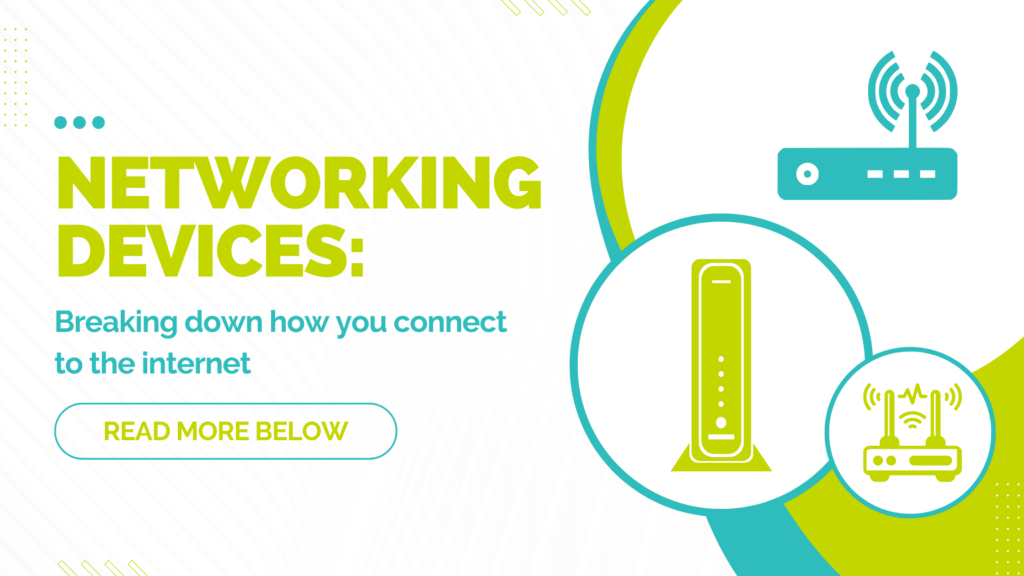Networking Devices: Breaking down how you connect to the internet
February 27th, 2023

Connecting to the internet these days is often as simple as clicking a button. So it’s crazy to think that there are actually a few different devices that are required to connect and use the internet. Devices like modems, routers, and ONTs are just a few of the devices that can be needed to make sure you are connected! Do you know the difference between them or the parts they play in making sure you can work, stream, and connect on the internet? If you don’t, don’t worry we’re here to break them down for you.
Let’s start with the basics. ONT, Modems, and Routers are all types of network devices that serve different purposes in helping your devices connect to the internet. Here’s what they do:
First, let’s go over what an ONT or Optical Network Terminal does. This is the device that we install in your home when we connect you to our fiber network. The ONT functions as a modem but specifically for fiber optic connections like the one we install. If you have an ONT you won’t need a modem to utilize your fiber connection. What the ONT does is convert the light signals coming through fiber-optic cables into the digital signals that your router and computer can understand. It also converts the digital signals sent out by your network into light signals that can be transferred over the fiber infrastructure. It acts as a sort of bridge between the fiber-optic network and your equipment, providing a way to access the high-speed internet services offered over the fiber-optic network.
Similar to the ONT a modem is a device that connects your home network to the internet service provider’s network. How it differs from the ONT is that instead of converting light signals to digital signals it converts the analog signals into digital signals. These analog signals are generally ones used in traditional copper or cable internet connections. Like the ONT the modem is also a bridge between the signal/information you receive from the internet and the information you see/send out.
So whether you have a traditional analog connection or a fiber-optic connection, modems and ONTs are vital to connecting to the internet you know and love. Without them, your computer wouldn’t be able to recognize or interpret any internet connection.
Now let’s talk about routers. The router actually has many functions when it comes to connecting to the internet but in its basic form, a router is a networking device that connects multiple devices together to form a local area network (LAN). It is responsible for routing traffic between the different devices on your home network and ultimately to the internet. Now let’s get into the other features a router generally has:
Firstly, your router also functions as a DHCP server which provides a unique IP address to each device connected to your network. This ensures that, just like a mailbox, the information gets routed to the correct address.
Second, your router will also typically include built-in switches which are just extra ethernet cable ports that will allow you to directly connect to multiple devices without the use of a wireless connection.
Lastly, we have probably the most well-known feature that routers generally include and that is that of a wireless access point. This wireless access point, sometimes known as a WiFi access point, allows you to broadcast a wireless or WiFi connection that your devices can use to connect to the internet wirelessly.
When it comes to your UTOPIA Fiber connection, we will provide the ONT for your connection, but you will need to provide your own router to connect to the ONT. When choosing a router for your home, you need to factor the speeds that you have chosen with your ISP. Some routers are only able to handle a certain level of internet speed, so it’s important to choose one that can handle the speeds you choose. If you need suggestions that we recommend you can check out our router recommendation here.
That’s all for now! We hope that this helps you better understand your internet devices and what they do to get you connected to the internet! If you’d like to learn more about our ONT unit and the routers that we recommend you can check out our Troubleshooting page here.
